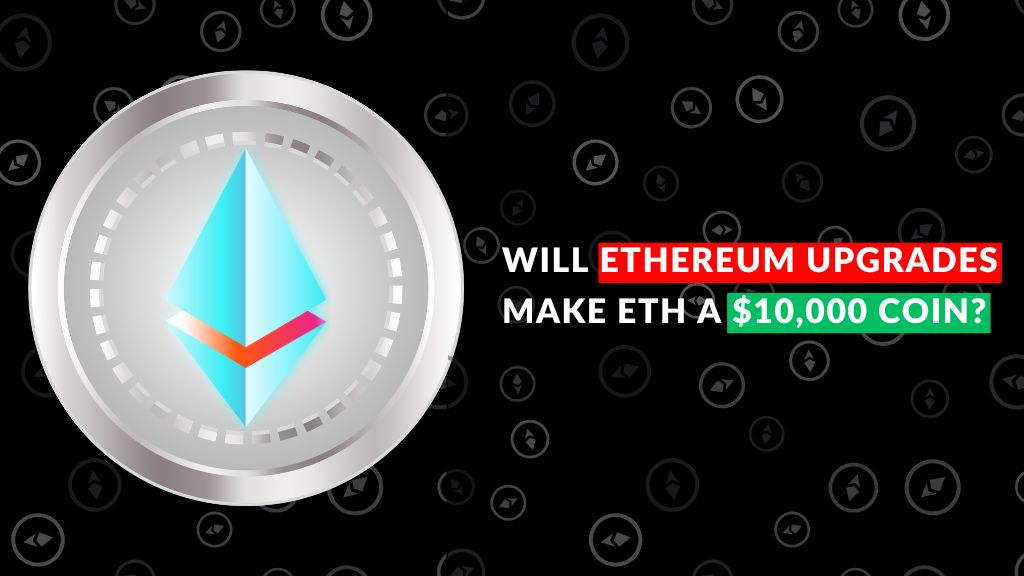
What Are the Ethereum Upgrades All About?
Ethereum Upgrades like Pectra and Fusaka, scheduled for 2025, are designed to fix the problems that have been holding Ethereum back: high gas fees, slow transaction speeds, and complex user interactions. As networks like Solana and BNB Smart Chain grow faster and cheaper, Ethereum needs a bold comeback—and these upgrades may be it.
Let’s break it down in plain English with real-life examples.
Why Ethereum Is Falling Behind – And Fast
Ethereum once ruled the crypto space, especially for smart contracts and DeFi. But times have changed.
Today, using Ethereum can feel like paying a premium price for dial-up internet. With average users facing $10–$20 gas fees for a simple swap, many have switched to faster, cheaper blockchains.
Competitors like Solana and BNB Smart Chain are like express trains. Ethereum, without the upgrades, is a steam engine trying to keep up.
Ethereum Upgrade #1: Pectra (May 2025)
Pectra is expected to introduce 11 Ethereum Improvement Proposals (EIPs) that modernize Ethereum’s core. Let’s look at the biggest ones.
EIP-7251: Boosting Validator Limits
Right now, a validator can only stake 32 ETH. Pectra increases this to 2,048 ETH.
Why it matters: Fewer validators handling larger amounts = less congestion and faster consensus.
Analogy: Imagine replacing 100 tiny batteries with 5 high-capacity power cells. Same power, better performance.
EIP-7691: Bigger Blobs, Lower Costs
This update increases blob capacity, allowing more data to be stored per block and lowering Layer 2 data fees.
Example: Think of Ethereum blocks as shipping containers. Before, you could fit 10 packages. Now you can fit 100—same trip, more value.
EIP-7702: Smart Account Abstraction
With account abstraction, users can:
- Bundle multiple actions into one transaction
- Let apps sponsor gas fees
Example: Instead of making three separate online payments, you complete all in one click—and the app pays the service fee for you.
Ethereum Upgrade #2: Fusaka (Late 2025)
If Pectra lays the foundation, Fusaka adds the polish. This Ethereum upgrade focuses on improving data availability and developer experience.
EIP-7594: Introducing PeerDAS for Danksharding
PeerDAS is Ethereum’s step toward full danksharding, which aims to maximize data throughput without overloading the network.
Simple explanation: Ethereum is turning a two-lane data road into an eight-lane superhighway.
Ethereum Object Format: Developer-Friendly Contracts
This new format will simplify how smart contracts are written and reduce gas fees for deploying them.
Why it matters: Developers will be able to build apps faster, using less code and paying lower execution fees.
Why These Ethereum Upgrades Matter in 2025
The Problem with Layer 2
Ethereum’s ecosystem is filled with Layer 2 solutions (like Arbitrum and Optimism) that handle transactions off-chain. While they help reduce gas costs, they also fragment the ecosystem.
Imagine trying to buy groceries at a supermarket where every aisle has a different payment system. That’s Ethereum today.
These upgrades aim to make Layer 2s more efficient without breaking the core Ethereum experience.
Still Not a Guaranteed Win
Despite the promise, Binance Research warns that Ethereum still faces pressure from data-centric platforms like Celestia, EigenDA, and NearDA. These platforms offer faster throughput and cheaper data availability—right now.
So while these Ethereum Upgrades help level the playing field, Ethereum must execute flawlessly and ensure rapid adoption.
Real-Life Impact of Ethereum Upgrades
Example 1: DeFi Traders
Before: $18 in gas to swap tokens
After: Possibly under $1
Example 2: dApp Developers
Before: 600+ lines of boilerplate code
After: Simplified codebase, cheaper deployment
Example 3: NFT Minting Platforms
Before: Priced out many artists
After: Affordable minting with cheaper blob storage
Will Ethereum Upgrades Be Enough?
They could be. These upgrades:
- Strengthen Ethereum’s base layer
- Streamline data availability
- Lower costs across the board
- Enable better user experience
But success depends on community support, developer migration, and how quickly users see real benefits.
Top 5 FAQs About Ethereum Upgrades
What are Ethereum Upgrades Pectra and Fusaka?
Pectra and Fusaka are major Ethereum upgrades set for 2025 that aim to enhance performance, reduce fees, and improve scalability.
How will Pectra improve staking?
Pectra increases the staking limit per validator from 32 ETH to 2,048 ETH, streamlining consensus and improving efficiency.
What is account abstraction in Ethereum upgrades?
It allows users to group actions into a single transaction and lets applications pay gas fees on behalf of users.
How does Fusaka help with scalability?
Fusaka introduces PeerDAS for enhanced data availability and brings Ethereum closer to full danksharding.
Will these upgrades lower gas fees on Ethereum?
Yes, both upgrades are designed to significantly reduce gas fees by optimizing data handling and smart contract execution.
Conclusion: The Ethereum Upgrades That Could Change Everything
Pectra and Fusaka are not just technical tweaks—they’re a complete makeover of how Ethereum operates.
From higher staking limits and cheaper data to simplified contracts and account abstraction, these Ethereum Upgrades offer real solutions to Ethereum’s growing pains.
The big question is: Will Ethereum execute fast enough to keep up with its rivals?
If it does, Ethereum won’t just survive 2025—it might just lead the next wave of blockchain innovation.
DISCLAIMER
The views, thoughts, and opinions expressed in this article belong solely to the author, and should not be taken as investment advice. Do your own research before taking any investment decisions.

